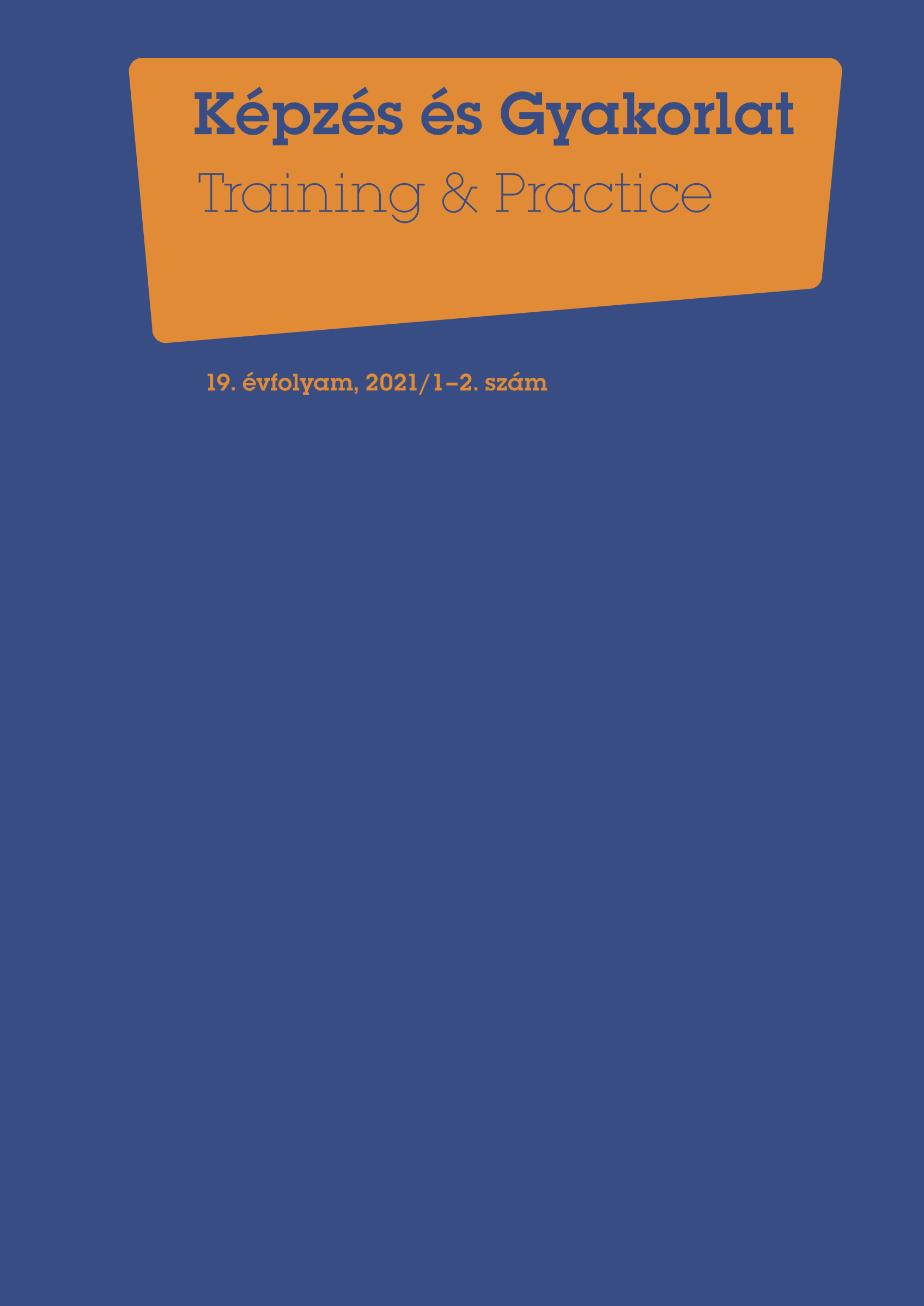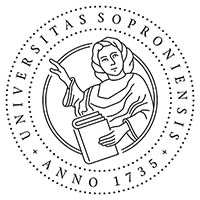Diversity and Inclusion in Higher Education
DOI:
https://doi.org/10.17165/TP.2021.1-2.7Absztrakt
Our study clarifies the concepts of inclusion and diversity based on domestic and international studies. We examine how diversity has become a feature of higher education, and the additional causes and consequences behind the focus of inclusivity. Our questionnaire study explored the extent to which the diverse group of students of the University of Pécs (N: 809) is involved in the university social and academic life, and whether those with social disadvantages show a difference in involvement. The results revealed that socially disadvantaged students are underrepresented in large university programmes, however, student colleges and other micro- communities are more able to address these students in a personal way and to provide an inclusive environment.
Hivatkozások
Arató F. & Varga A. (2015) (ed.). Inclusive University: How to Increase Academic Excellence Focusing on The Aspects of Inclusion. University of Pécs, Faculty of Humanities, Institute of Education, Pécs. Autonomy and Responsibility Study Volumes IV. http://kompetenspedagogus.hu/sites/default/files/arato-f-varga-a-inclusive-university-univ-pecs-2015.pdf [Letöltés: 2020.07.25]
Bailey, M. & Dynarski, S. (2011). Gains and Gaps: Changing Inequality in U.S. College Entry and Completion. National Bureau of Economic Research. Cambridge. DOI: https://doi.org/10.3386/w17633
Bauman, G., Bustillos, L., Bensimon, E., Brown, Ch. & Bartee, R. (2005), Achieving Equitable Educational Outcomes with All Students: The institution's Roles and Responsibilities, Association of American Colleges and Universities. Washington D.C. USA 57.
Brusoni, M. et al (2014). The Concept of Excellence in Higher Education. European Association for Quality Assurance in Higher Education AISBL. Brussels.
Burgstahler, S. (2015). Universal Design of Higher Education: From Principles to Practice, Second Edition. Boston, Harvard Education Press.
Claeys-Kulik, A., L. Jorgensen, T. E. & H. Ströber (2019). Diversity, Equity and Inclusion in European Higher Education Institutions. Results from the INVITED project. European University Association asbl. Brussels. Belgium
Cooper, M. (ed. 2010). Changing the Culture of the Campus: Towards an Inclusive Higher Education - Ten Years on. London, European Access Network,.
Cooper, M. (ed. 2012). Student Diversity in Higher Education: Conflicting Realities - Tensions affecting policy and action to widen access and participation. European Access Network, London.
Danowitz, M. A. & Tuitt, F. (2011). Enacting Inclusivity Through Engaged Pedagogy: A Higher Education Perspective. Equity & Excellence in Education, 44 (1), pp. 40-56. DOI: https://doi.org/10.1080/10665684.2011.539474
Dezső R. (2015). Plurális intelligencia-koncepciók, tanulásközpontú pedagógiai megközelítések és az inkluzivitás összefüggései. In: Arató F. & Varga A. (szerk): Befogadó Egyetem, Az akadémiai kiválóság fejlesztése az inklúzió szempontjainak érvényesítésével. pp. 75-88.
Guo, S. & Jamal, Z. (2007). Nurturing cultural diversity in higher education: A critical review of selected models. 37. pp. 27-49. DOI: https://doi.org/10.47678/cjhe.v37i3.529
Harris, T. N. & Lee, C. N. (2019). Advocate-mentoring: a communicative response to diversity in higher education, Communication Education, 68 (1) pp. 103-113. DOI: https://doi.org/10.1080/03634523.2018.1536272
Hurtado, S., Alvarez, C. L., Guillermo, W. Ch., Cuellar, M. & Arellano, L. (2012). A Model for Diverse Learning Environments the Scholarship on Creating and Assessing Conditions for Student Success. In: SMART, J. C., PAULSEN, M. B. (ed.): Higher Education: Handbook of Theory and Research, Higher Education: Handbook of Theory and Research 27. Springer Science and Business Media B.V. pp. 41-122. DOI: https://doi.org/10.1007/978-94-007-2950-6_2
Hurtado, S. & Ruiz, A. A. (2015). Thinking about race: The salience of racial identity at two and four-year colleges and the climate for diversity. Journal of Higher Education, 86 (1) pp. 127-155. DOI: https://doi.org/10.1353/jhe.2015.0000
Lombardi, A.; Murray, C. & Dallas, B. (2013). University Faculty Attitudes Toward Disability and Inclusive Instruction: Comparing Two Institutions. Journal of Postsecondary Education and Disability, 26(3), pp. 221-232
Magnus, C. D., Lundin, M. (2016). Challenging norms: University students' views on heteronormativity as a matter of diversity and inclusion in initial teacher education. International Journal of Educational Research Vol.79, pp. 76-85. DOI: https://doi.org/10.1016/j.ijer.2016.06.006
Maples, R. (2014). The Legacy of Desegregation: The Struggle for Equality in Higher Education. Palgrave-MacMillan. DOI: https://doi.org/10.1057/9781137437990
May, H. & Bridger, K. (2010). Developing and embedding inclusive policy and practice in higher education. York, The Higher Education Academy.
Milem, J., Chang, M. & Antonio, A. (2005). Making diversity work: A researched based perspective. Washington D.C., Association of American Colleges and Universities.
Musu-Gillette, L., Robinson, J., McFarland, J., KewalRamani, A., Zhang, A., & Wilkinson Flicker, S. (2016). Status and Trends in the Education of Racial and Ethnic Groups 2016 (NCES 2016-007). Washington, DC., U.S. Department of Education, National Center for Education Statistics.
Myers, Ben. (2016). The Flagship Diversity Divide. The Chronicle of Higher Education. Nolan, J. & Targett, N. (2017). Developing and Sustaining Inclusive Excellence and a Safe, Healthy, Equitable Campus Community at UNH. Interim Report Presidential Task Force on Campus Climate. New Hempshire.
O'Donnel, K. et al (2011). Putting High-Impact Practices and Inclusive Excellence at the Center of GE Reform: Lessons from the California State University LEAP Initiative. Peer Review, Spring 2011, Vol. 13, No. 2.
Proity P. (2020). Inklúzió a felsőoktatásban. Hátrányos és halmozottan hátrányos helyzetű jelentkezők a felsőoktatási felvételi eljárásban. PTE BTK. Szakdolgozat DOI: https://doi.org/10.1556/2063.29.2020.3.9
Solomon, A. et al (2017). Data-Driven Action Plans for Student Success and Inclusive Excellence. Washington, Association of American Colleges and Universities.
UNESCO (2009a). Policy Guidelines on Inclusion in Education. United Nations Educational, Scientific and Cultural Organization. Paris.
UNESCO (2009b). Defining an Inclusive Education Agenda: Reflections around the 48th Session of International Conference on Education. Geneva: UNESCO IBE
Varga A. (2015a). The Theory and Practice of Inclusion. University of Pécs. Faculty of Humanities. Institute of Education Pécs, forrás [Letöltés: 2020.08.15.]
Varga A. (2015b). Hátrányos helyzet és iskolarendszer. In: Kozma T., Kiss V.Á., Jancsák Cs. & Kéri K. (szerk.): Tanárképzés és oktatáskutatás. HERA, Debrecen, pp. 621-633
Varga A. (2015 szerk.). PRÓBATÉTEL - A pécsi roma szakkollégiumi program értékelése. PTE, Pécs. forrás [Letöltés: 2020.08.15]
Varga A., Deli K., & Fodor B. (2019). A felsőoktatás befogadóvá válásának szemléleti kerete és gyakorlati megvalósítása a Pécsi Tudományegyetemen. Educatio, 28 (4) pp. 755-766. DOI: https://doi.org/10.1556/2063.28.2019.4.7
Williams, D. A., Joseph, B. B. & Shederick, A. Mc. (2005). Toward a Model of Inclusive Excellence and Change in Postsecondary Institutions. Washington D.C., Association of American Colleges and Universities.
Letöltések
Megjelent
Folyóirat szám
Rovat
License
Copyright (c) 2021 Aranka Varga, Kitti Vitéz, István Orsós, Bálint Fodor, Gergely Horváth

This work is licensed under a Creative Commons Attribution-NonCommercial-NoDerivatives 4.0 International License.








